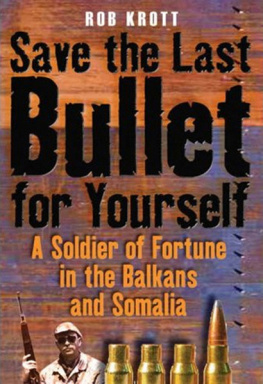
This edition is published by PICKLE PARTNERS PUBLISHINGwww.picklepartnerspublishing.com
To join our mailing list for new titles or for issues with our books picklepublishing@gmail.com
Or on Facebook
Text originally published in 1996 under the same title.
Pickle Partners Publishing 2013, all rights reserved. No part of this publication may be reproduced, stored in a retrieval system or transmitted by any means, electrical, mechanical or otherwise without the written permission of the copyright holder.
Publishers Note
Although in most cases we have retained the Authors original spelling and grammar to authentically reproduce the work of the Author and the original intent of such material, some additional notes and clarifications have been added for the modern readers benefit.
We have also made every effort to include all maps and illustrations of the original edition the limitations of formatting do not allow of including larger maps, we will upload as many of these maps as possible.
MISSION CREEP: A Case Study in U.S. Involvement in Somalia
By
Major Michael F. Beech Infantry
TABLE OF CONTENTS
Contents
TABLE OF CONTENTS
REQUEST FROM THE PUBLISHER
ABSTRACT
Mission Creep : A Case Study in US Involvement in Somalia by Major Michael F. Beech, USA, 61 pages.
This monograph explores the problem of mission creep. The trend toward ethnic and regional unrest has characterized the world security environment since the breakup of the former Soviet Union. The United States has struggled to find its place in the new world order. As a result US military forces have increasingly found themselves involved in various operations other than traditional warfare. Often the political aims of these operations are difficult to identify and translate into military operational objectives and end states. Worse yet, the political aims themselves are prone to rapidly shift and evolve from those originally intended, leaving the military commander the difficult task of catching up with policy or even guessing at the political objectives. This uncertain environment sets the conditions for the delinkage between the political goal and military operations which may result in disaster.
The monograph examines US operations in Somalia to provide the data for the analysis in order to determine the factors which contribute to mission creep. Examining US-Somalia policy from 1992 (Operation Restore Hope) to October 1993 (United Nations Operations in Somalia II ) this monograph analyses the evolution of national policy objectives and the military and political operations undertaken to achieve those objectives. An analysis of operational and tactical objectives and end states as well as military methods determines the factors which contributed to the failed US involvement in UNOSOMII. In addition, the monograph identifies the Somali geo-political, historical, cultural, and economic factors which influenced US operations.
This monograph concludes that contradictory and uncoordinated national strategy and political policy resulted in poor operational planning and execution. There were also significant factors at the operational level which contributed to the failed US intervention. Military operations were not connected to the rapidly shifting political aims. Commanders cannot abrogate the responsibility of establishing clear and achievable objectives even in environment of strategic ambiguity. Implications discussed in the conclusions include an analysis of the United Nations ability to lead multinational peace operations and warnings for future US entanglements with the UN.
I, Introduction
On 12 May 1994 the parents of three American soldiers who had been killed while conducting a raid to capture a Somali warlord stood before the President of the United States, William J. Clinton and his special advisor Anthony Lake in the Oval Office of the White House. The soldiers where three of the eighteen killed on 3 October 1993 in a vicious nine hour battle against a Somali armed faction on the streets of Mogadishu, Somalia. Part of an elite special operations task force sent to Somalia by the Clinton administration their mission was to capture a recalcitrant Somali warlord who was responsible for attacks against the UN forces. On 3 October the raid turned into a tragedy when several US helicopters were shot down while participating in the mission. Invited to the White House by the President, the parents demanded an explanation as to why the US was conducting the raids in the first place.
What had started nearly two years earlier as a purely humanitarian military intervention to feed thousands of starving Somalis who feel victim to famine and civil war, had somehow evolved into a battle against one of Somalias warring factions. When questioned by the parents as to why US troops were trying to capture a Somali warlord, Clinton answered that when he received the reports of the casualties of the failed raid he himself was dumbfounded saying, what in the world were we doing conducting a raid when we should be seeking a diplomatic solution? {1} One parent, a Vietnam veteran, told the President he felt that his son had died for nothing. {2} The parents were dismayed by Clintons remarks which seemed to suggest that the President was unaware of the military operations being conducted in Somalia.
Even more surprising than the tragedy itself was Clintons declaration of his astonishment at discovering that US forces in Somalia were conducting raids to capture a clan leader. His statements suggest that military operations expanded beyond their intended scope and purpose. Yet, Clinton had ordered the deployment of the special operations forces to Somalia. In addition, both their deployment as well as several raids prior to the 3 October tragedy were well documented in the media. {3} In fact, the United Nations resolution calling for the capture of the Somali leader was strongly supported by the Clinton administration. In brief, the US not only helped form UN policy regarding the capture of clan leaders but also provided the forces to execute the man-hunts for the faction leaders. By exploring the circumstances surrounding the US intervention in Somalia this monograph will determine if and how the US military mission crept beyond the stated national policy objectives as Clinton suggested.
This monograph examines the evolution of national policy and military operations in Somalia which ultimately ended in failure and tragedy. Examining US-Somalia policy from 1992 (Operation Restore Hope) through October 1993 (United Nations Operations in Somalia II) this monograph analyses the evolution of national policy objectives and the military and political operations undertaken to achieve those objectives. An analysis of the operational and tactical objectives and end states as well as the military methods undertaken in Somalia will determine the factors which resulted in the failed US involvement in Somalia and will determine lessons with respect to future peace operations. Specifically, this monograph examines the application of operational art in Somalia for evidence of delinkage between national aims and tactical operations as well as evidence of mission creep. For the purpose of this analysis the term mission creep describes the phenomenon in which military operations expand beyond the original mission resulting in additional military tasks which directly conflict with the intended military and political outcomes. {4} In order to folly understand the failed US intervention in Somalia the paper first examines Somali social, cultural, and historical factors which influenced US operations















